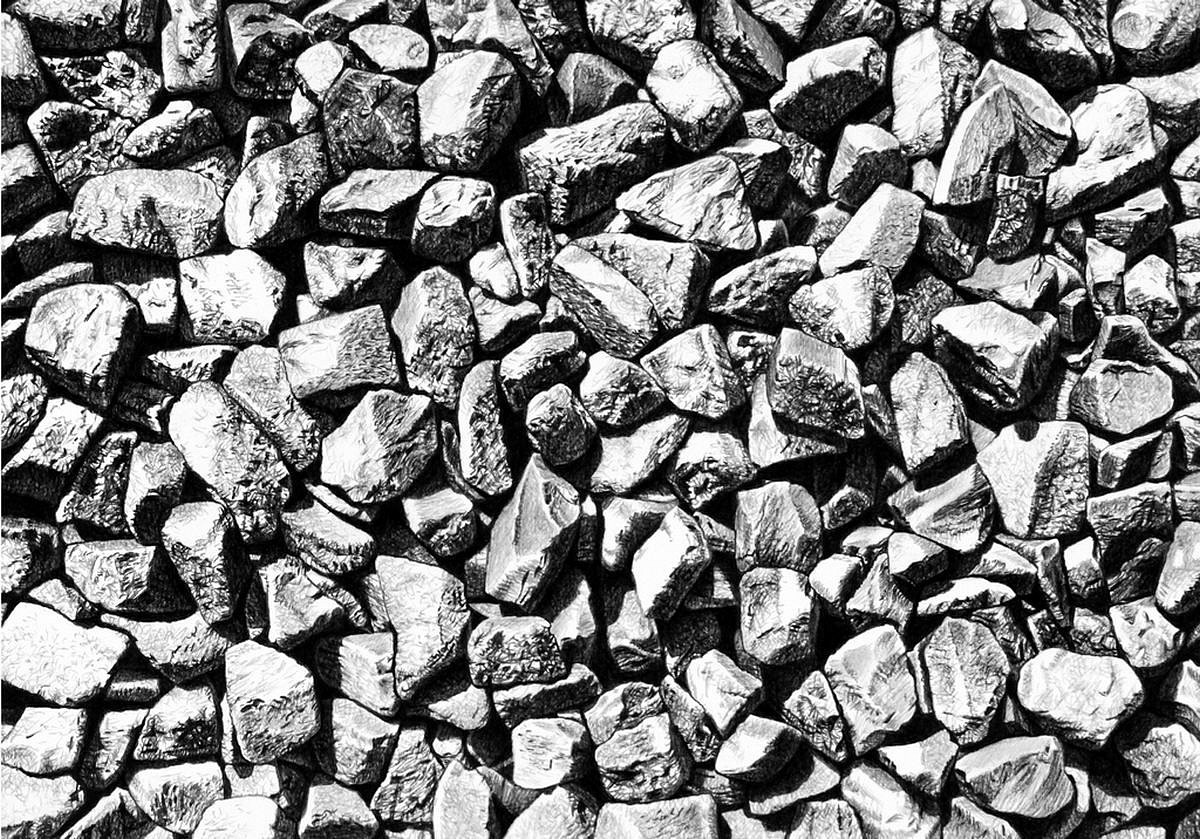PRESS RELEASE

Romano Bertuzzi obsessively draws hyper-realistic images of humble but indispensable elements of our natural world-here wood and stone-whose intricate beauty goes unnoticed because they are ubiquitous. His drawings reveal with clarity more than one could possibly see without taking the time to look carefully. They encourage scopofilia, the need to look. His art is not meant to be flashy or fast, it is conservative and preserves a tradition. Therefore it is not surprising to know that it is influenced by Arte Povera, the Italian Conceptual avant-garde movement that emerged in the late 1960s and Conceptual Art flourishing at Galleria Cenobio Visualita' in Milan where he worked and showed in the '90s.
He delineates different surface textures of forms of wood in exquisite detail: a weathered bark of a tree trunk, exposed grain of split logs, burning charcoal in a campfire, or a pile of pebbles. As a detail of the surface patterns of a rock one might pick up for closer inspection, he also depicts materials from nature manipulated by man for practical purposes, like making cheese from milk or making bread by kneading dough from grain.
Bertuzzi has dedicated his forty-year career to representing nature with the pastel, a seemingly basic implement for drawing he encountered early in childhood, but a tool that is very difficult to master. Pastels have been used by artists since the Renaissance and reflect light so can achieve a deep saturated black that graphite cannot.
He works from one, 5 x 7 inch printed photograph. He does not rule the photograph and the paper but rather extrapolates a larger version in greater detail by hand, repetitively making marks with an obsessive microscopic exploration to slowly reveal the importance of surface and texture. There is a meditative gentleness in this pedantry. He works in his studio every day and it takes three months to create one large-scale painting.


